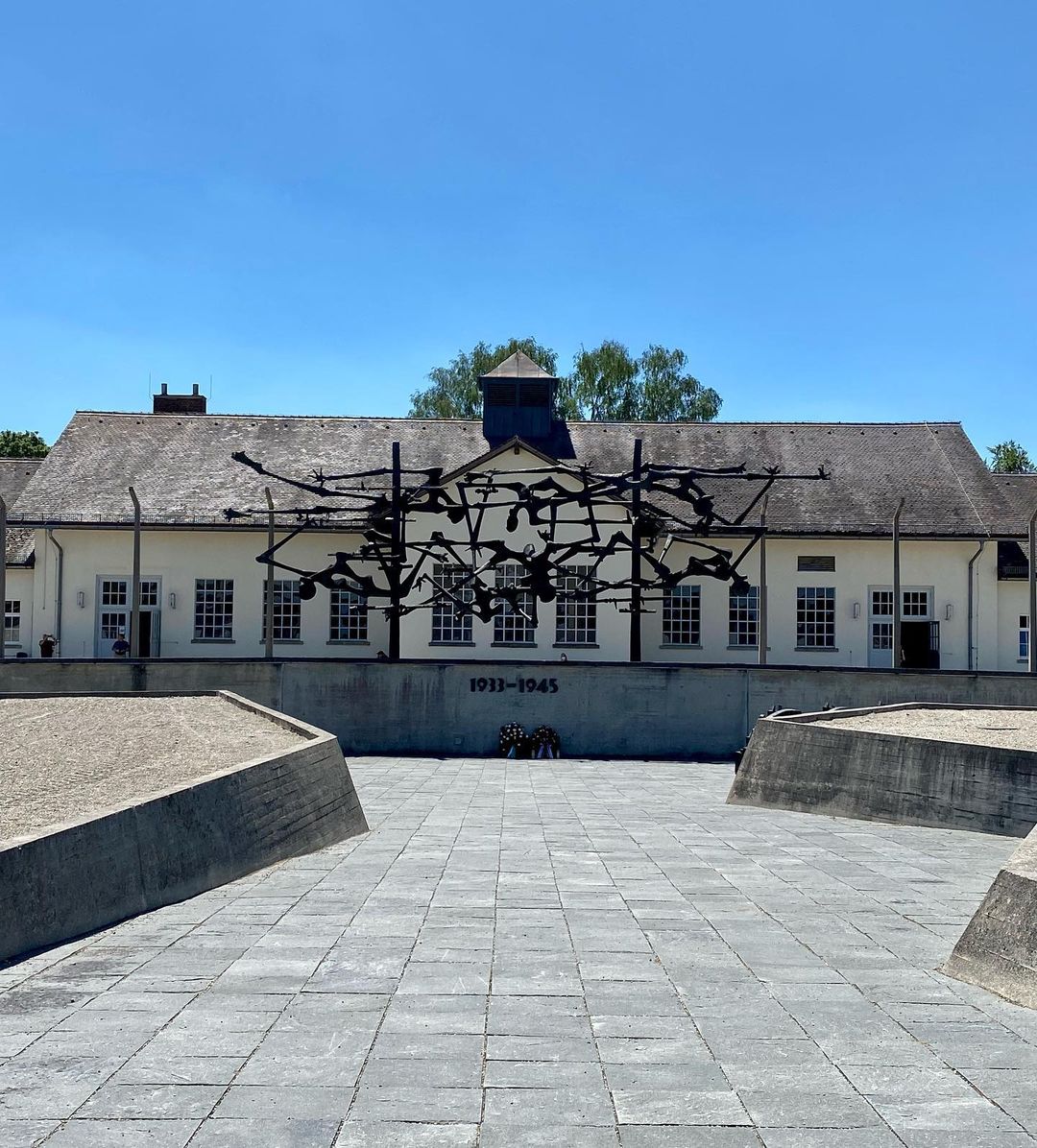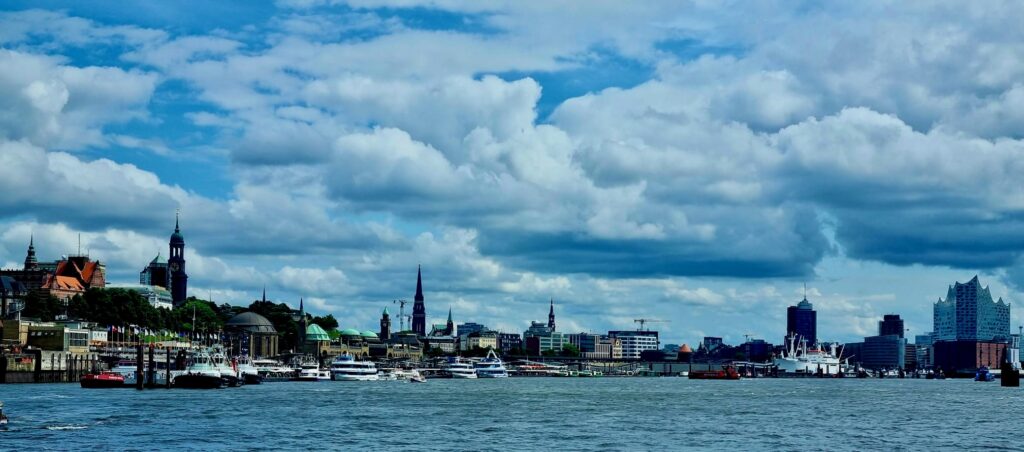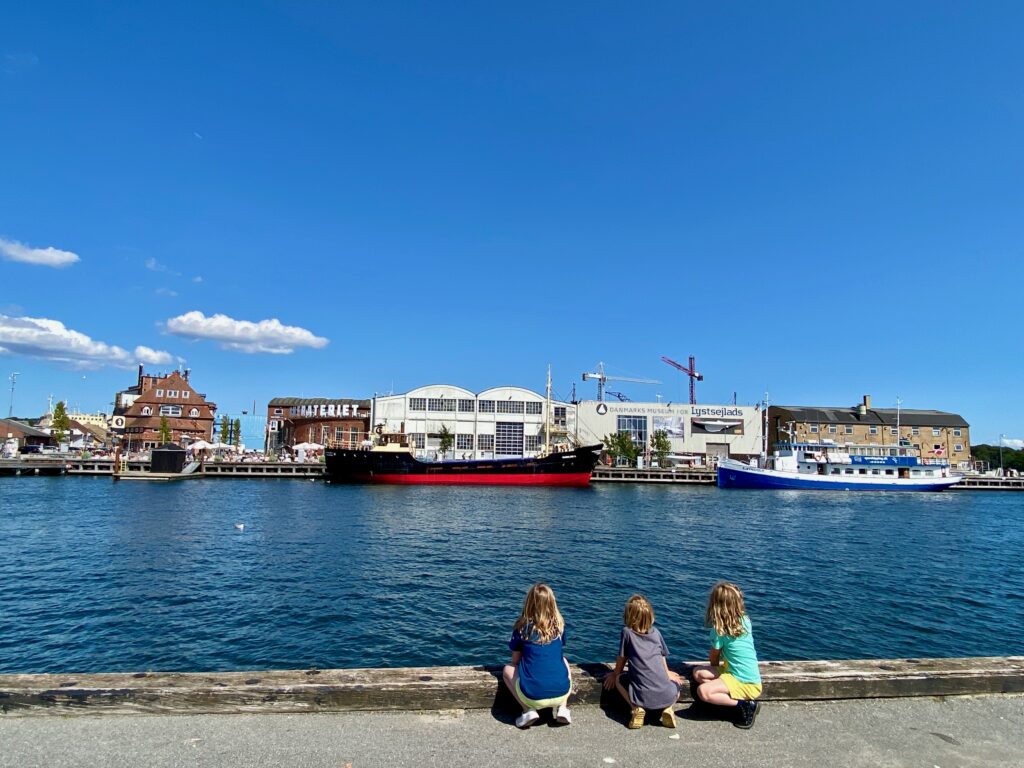As a grandchild of Holocaust survivors, our visit to Dachau Concentration Camp brought up a lot. Though an emotional and complicated experience, I’m glad we went. It’s an hour by train and bus outside Munich. Since it’s inappropriate to bring young children, we were fortunate to have a babysitter watch Jacob.
As much as I’ve learned about the Holocaust, it felt like an otherworldly experience to enter the gates of a concentration camp. Yet this was and is of this world…
Dachau was the first Nazi camp, a vast military and administrative complex opened in 1933, which served as training grounds and the model for all the other camps, including Auschwitz. To visit is to see clearly how the Nazis designed and refined a system of forced labor, torture, starvation, disease conditions, and eventually mass murder. Yet just outside the walls, townspeople claimed they didn’t know what was happening here. Sadly, for a variety of reasons, it took decades to establish what is now a museum and memorial on just a fraction of the complex.
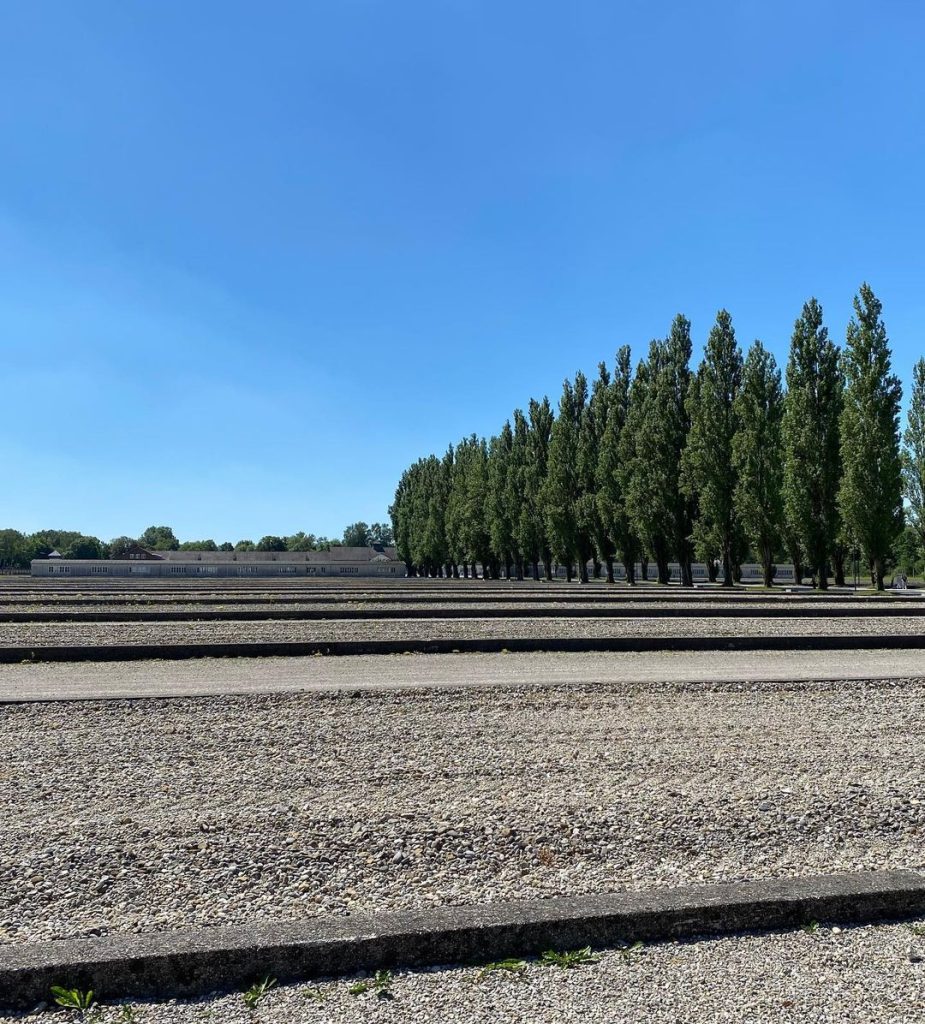
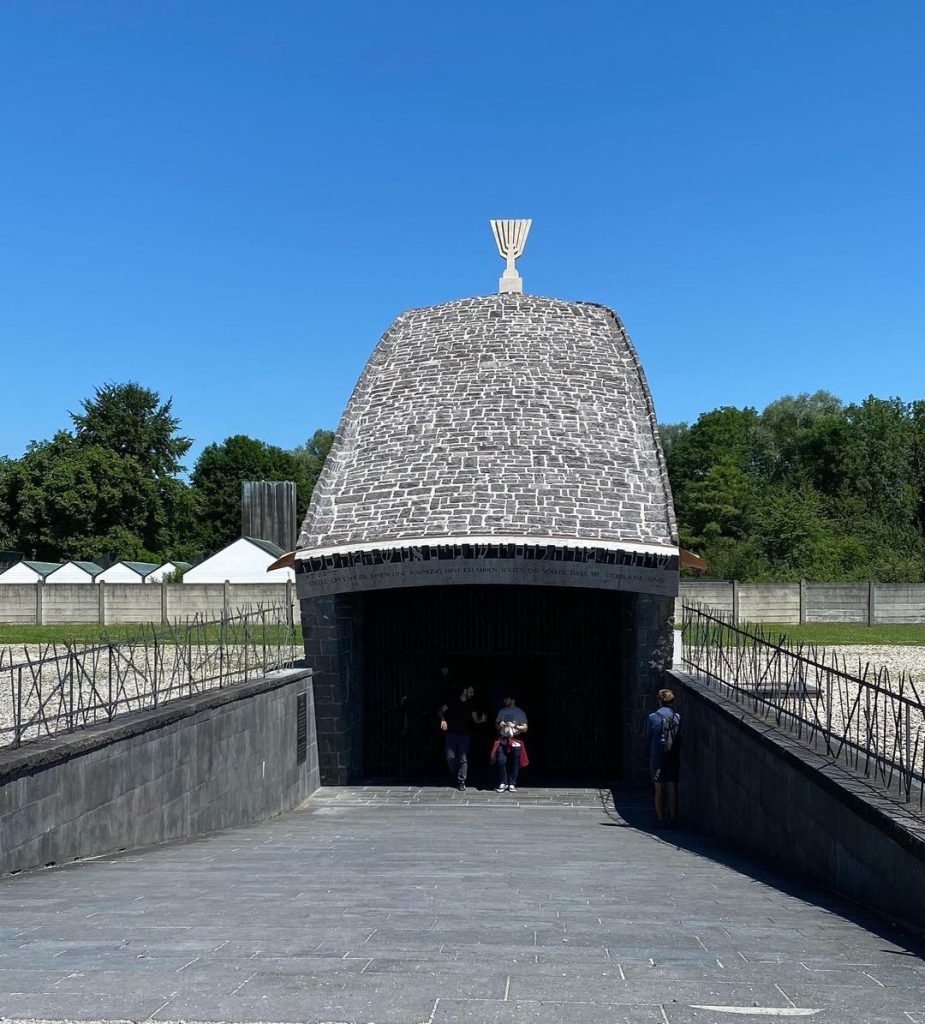
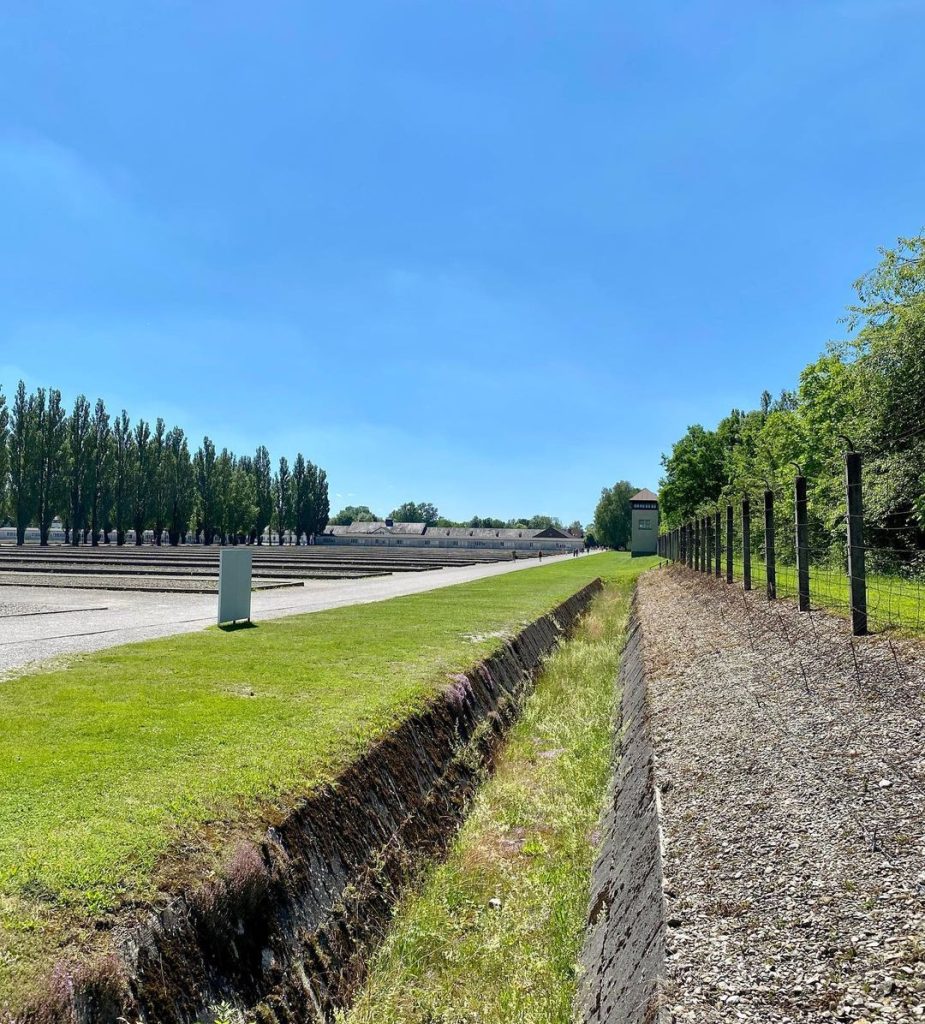

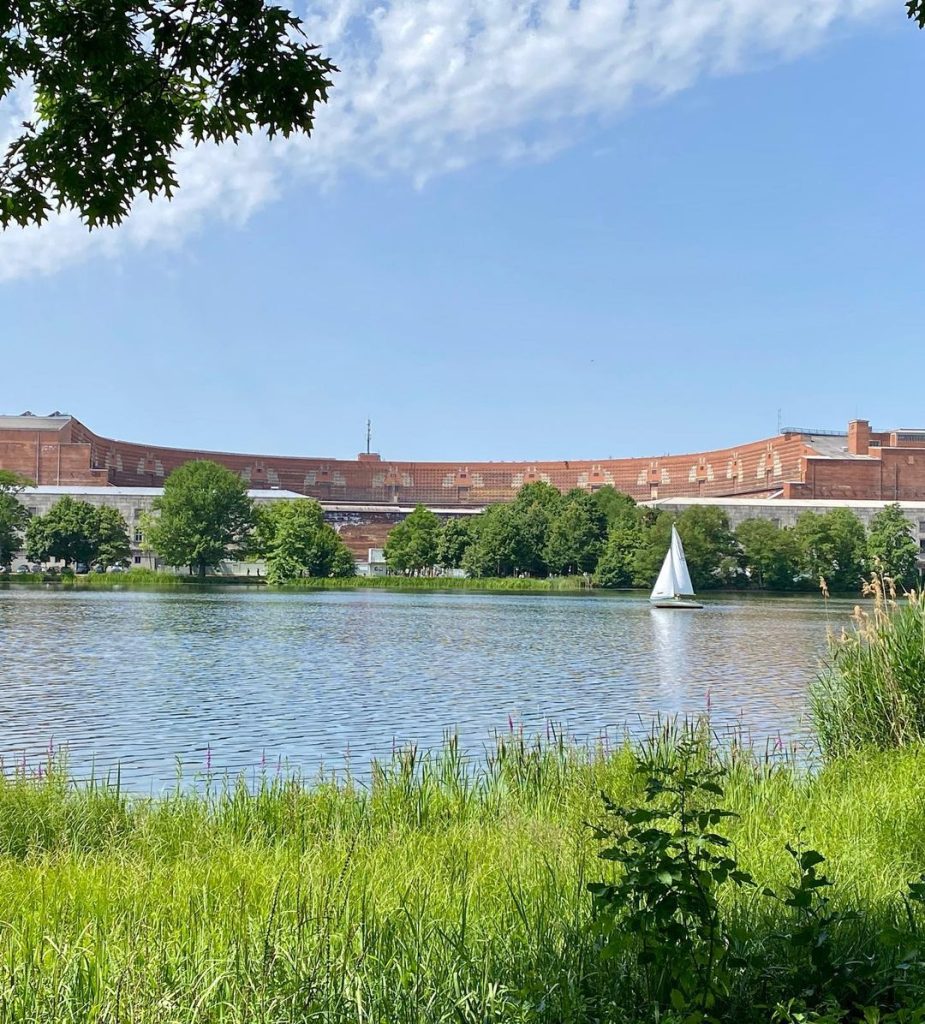
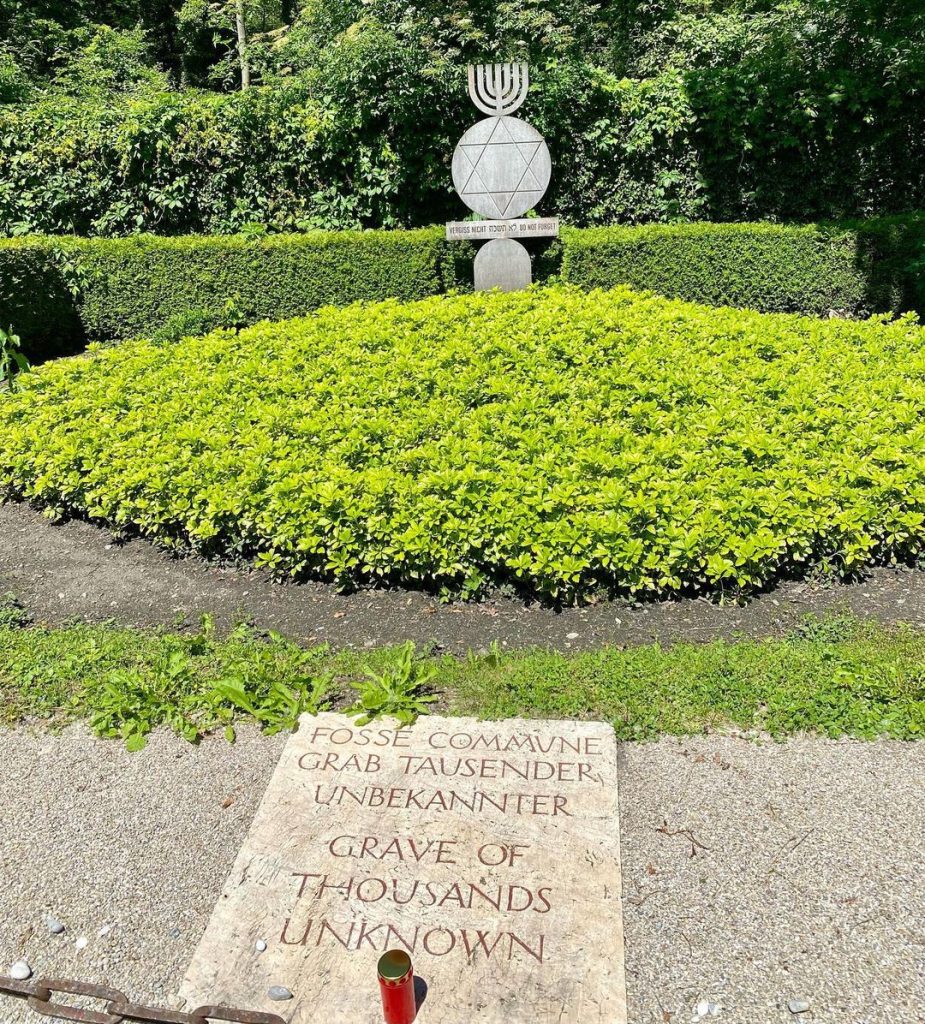
The scope and scale of the camp is impossible to capture in photos. You can spend hours just walking the grounds and the museum exhibits, documentation, and audio guide testimonials from survivors and witnesses deserve several more hours. Very little remains of the barracks where tens of thousands lived and died in some of the worst conditions imaginable. The crematorium is still there, as are the guard towers, trenches, and walls which prevented any possible escape. There are memorials for those who were murdered from different faiths, including Jews. In the dark cave of the Jewish memorial I recited the Kaddish in tears for all of the lives cut short.
I left emotionally exhausted but also affected by the efforts to document, account, and memorialize what happened here, as I did when we visited the Museum of Terror and other Nazi-era sites in Berlin several years ago.
